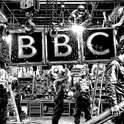In Julian Assange’s last court hearing in London, not long before his dramatic release from prison and journey home to Australia in June, his legal team cited the case of Philip Agee who, like Assange, had been pursued by the US authorities for publishing secret information about their activities abroad.
Nearly half a century earlier in 1976, Agee worked with Time Out magazine to reveal the names and activities of members of the United States Central Intelligence Agency to which he had once belonged. His anger at what the CIA had been doing in Latin America in support of dictatorships drove him to expose the organisation in his book Inside the Company.
When London’s Time Out magazine published the names of the CIA operatives, it was denounced by the then US ambassador to the UK, Elliot Richardson. Agee was deported from Britain in 1977 with the former Time Out journalist Mark Hosenball, an American who had worked on some of the exposés, after the two men were deemed security threats. A campaign to halt their deportation failed but, crucially, Agee was not extradited to the US to stand trial under the Espionage Act, hence why Assange’s team referenced him.
The very day after Agee had been mentioned in court a former Time Out colleague emailed me, noting with amusement the announcement of a new deal between “two iconic brands”—Time Out and Coca-Cola. Stacy Bettman, CEO of Time Out Media in the US, said, “We are thrilled to work with Coca-Cola on this global partnership—it makes the most of what we do and represent as a brand: our authentic ‘best of the city’ content, global footprint, experience-hungry audience around the world, engaging channel mix and most of all, our love for cities and food expertise.”
The agreement with Coca-Cola is part of a pattern. Private Eye revealed that Time Out’s chief content officer, Dave Calhoun, had told staff that it would cease publishing “lengthy negative starred reviews” and would highlight only ones with three, four or five stars. “We will no longer show our workings with negative starred reviews… to create a more brandsafe environment for our clients and our partners… At Time Out we believe in cities and businesses that drive the going-out economy…We must be honest, but we don’t need to loud-hail the negative.”
How strange that a publication that once prided itself on challenging the establishment should agree a deal with one of the world’s largest and most lucrative brands. And that a publication that started life in 1968 under the far-sighted Tony Elliott, who died in 2020, to challenge the boring What’s On magazine and give its readers honest reviews rather than puff pieces, should end up telling its staff not to be rude about films and shows but to keep everything “brandsafe” (my favourite new word of the year).
I checked with Calhoun whether the Private Eye tale, which had caused much merriment among old TO staff, was accurate. He responded that “at Time Out, we’ve always been about curating and spotlighting the best of the city—and we’ve been doing that in London since 1968… The world has changed hugely since then and so have we at Time Out in response to our audience’s changing needs”.
It all seemed a very, very long way from those Agee days, a period when not only was Hosenball deported but when another Time Out reporter, Crispin Aubrey, and my freelance namesake, Duncan Campbell, were prosecuted under the Official Secrets Act. Another reporter was arrested under the Prevention of Terrorism Act, and the Special Branch routinely bugged the magazine’s phones. Police visits were common.
The mighty Steve Bell drew a weekly cartoon, and the AgitProp section listed all the demonstrations and political gatherings in London and reported on many of them, not least the activities of the National Front, which was surging at that time in a similar fashion to the far right today. I was the news editor at the time and it was an exciting place to work.
But Time Out, which once had a circulation of more than 100,000, had long ago ceased to publish controversial news. It became a free handout in London in 2012 and published in print for the last time in 2022. Caroline McGinn, its then global editor in chief, wrote, in the very last copy: “Tissues out, fellow citizens: this is the last regular issue of Time Out magazine. Our mission continues online.”
Meanwhile, the Evening Standard announced earlier this year that its daily print edition would cease and that its mission too would continue mostly online, alongside a weekly magazine. This means that for the first time in nearly two centuries London will have no evening paper. There had once been three in the capital, selling hundreds of thousands of copies a day. The Star and Evening News merged in 1960 and ceased publication in 1980. Robert Maxwell tried to challenge the Standard with the London Daily News in 1987 but made the mad decision to turn it into a 24-hour publication. It sank with all hands (including these ones) after a few months, although it was, for its very brief existence, just as good as the Standard.
As Simon Jenkins, who edited the Standard in the 1970s, put it in a Guardian article: “There is no substitute for a stable institutional critique of local democracy. The state of London’s streets, its traffic, its housing, its arts and culture are at the mercy of the internet’s cries of pain. They need civic journalism—and they have lost it.”
In 2019, the paper announced in an editorial that “Twice the Evening Standard supported Boris Johnson to be the mayor of London. Today we back him to be the next prime minister.” The following year, Johnson ennobled the Standard’s owner, Evgeny Lebedev, as Baron Lebedev of Hampton and Siberia. In its final weeks of daily print publication the Standard was “loud-hailing” its view on the best podcasts, which just happened to include one of its own entitled—without irony—Brave New World, hosted by Baron Lebedev. “The podcast dives deep into the ideas of thought leaders, scientists and intellectuals,” readers were told. Would Boris count as a “thought leader”?
Everywhere in journalism now there are redundancies and closures. Since 2009, some 300 local newspapers have closed in Britain. Press Gazette has reported that the number of local journalists in UK media has declined from around 13,000 in 2007 to around 4,000 now. And yet with the growth of the far right on the streets, the problems of knife crime, local government corruption, monstrous new buildings, traffic nightmares, homelessness and religious division over the Israel-Gaza war, London has never had a greater need of regular news and comment and investigation.
In the Observer in July, Rachel Cooke highlighted the growth of a new kind of online community journalism epitomised by Mill Media in Manchester, which is aiming to launch a London version this year and which was advertising for London staff at the start of August, when the Standard began phasing out its daily run. These many new initiatives—in Manchester, Bristol, Liverpool, Glasgow, Edinburgh, Sheffield—are to be welcomed, but the gaping holes left by the departure of local print publications are deep and dark.
For instance, the loss of the daily Standard edition means that Tristan Kirk is no longer the last courts correspondent for a London daily newspaper. The deserved winner of this year’s Paul Foot award for campaigning and investigative journalism, he has highlighted how almost all of what happens in our courts, both in London and nationally, is now barely covered in the press.
By chance, when I was on the way in July to the launch of Margaret Renn’s biography of Paul Foot, I passed the corner of Tottenham Court Road where there had always been a busy and well-stocked newsagent’s stall. The stall was still there but there was no print in sight. It was now a “Phone and Lap Accessories” store, which said it all.
Shortly before his death in 2008 I met up with Agee again in Hamburg, where he then lived. He was as idealistic and committed as ever and spoke about the CIA revelations, describing the 1970s as a time when “the worst imaginable horrors” were happening in Latin America. “Argentina, Brazil, Chile, Uruguay, Paraguay, Guatemala, El Salvador—they were military dictatorships with death squads, all with the backing of the CIA and the US government. That was what motivated me to name all the names and work with journalists who were interested in knowing just who the CIA were in their countries.” This clearly was not a man interested in making the US government “brandsafe”.
Ultimately, what London needs is both a daily and a weekly that can report without fear or favour. The time when a trip on the London Underground or bus would be accompanied by commuters reading an evening paper or magazine is gone for ever, as people stare glumly at phones. The spread of the far-right riots in the summer, fuelled by countless online lies, was a reminder that rumour goes halfway round the world while truth is still in its pyjamas. Of course, old hacks always complain that things ain’t what they used to be, but what has happened to the Standard and Time Out and to so much of the local media across the country is both sad and problematical.
I recently spoke to a man who had just been released from prison in California after spending more than 40 years behind bars. What had struck him most about being free? “Everyone on the street seems to be looking at their phones rather than at anything else,” he said. “They all seem to be connected—but disconnected.”
London, the capital of the United Kingdom, a city of nine million people with a million stories to tell, now seems in danger of being disconnected, too.













